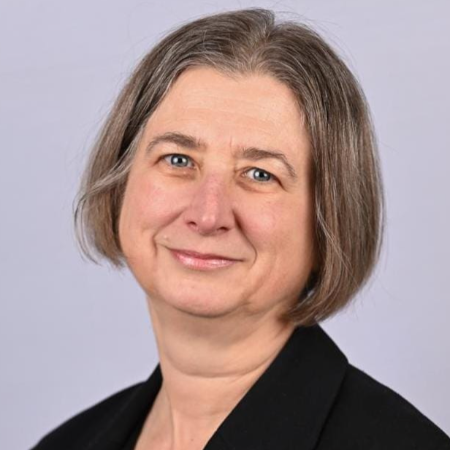Perspectives: New frontiers for the development of CPRI in Latin America
Larissa Belizario, director, political risk & credit, Latin America, at Chubb, shares her experience in the CPRI market in Latin America, the changes she has witnessed, the evolution of the role insurance is having in local markets, and the prospects for the Brazil market and in renewables in particular.

TXF: You’ve been working at Chubb in Latin America for nearly a decade and are in a pretty unique position, how has the credit and political risk insurance market evolved – what changes have you seen?
 Larissa Belizario (LB): I've actually been working in the political risk and credit market in Latin America for 20 years, 10 of that with Chubb. I was a broker at the beginning of my career, then I moved to being a private insurer, first with Banco Itaú and then with Chubb, when it was ACE Group. It's been good to see the shift in the market, which has gained new colours of sophistication and complexity.
Larissa Belizario (LB): I've actually been working in the political risk and credit market in Latin America for 20 years, 10 of that with Chubb. I was a broker at the beginning of my career, then I moved to being a private insurer, first with Banco Itaú and then with Chubb, when it was ACE Group. It's been good to see the shift in the market, which has gained new colours of sophistication and complexity.
It used to be a market mainly dominated by short term (ST) transactions, focused on subsidiaries of multinational companies with operations in the region, for their portfolio of domestic (80%) and export (20%), and the majority of this was ground-up coverage.
When I first started, there was no offering of medium to long term (MLT) or political risk cover in the domestic markets in Brazil, for instance. Back then, any time we had an inquiry, we would have to go to the US or the London market for placement. These markets continue to be an important source of capacity for the region.
Now we see new players in the markets, a more diverse range of products being offered in the region, placement of risks under complex structures of securitisation or structured trade finance, a wider knowledge of insurance solutions, including that related to ECAs, which in the past used to be concentrated on few major national players.
Even the Brazilian ECA, and other Latin American countries' ECAs, are becoming more wide-ranging about how they can assist corporates in their endeavours to reach international markets. In the past they were very concentrated on a few national giants, it was very rare for a medium sized, or even a large domestic company, to access the ECA offering. Latin American ECAs have looked at the experiences of other international ECAs and EXIM banks and have realised that it is important to have a range of products to support medium sized enterprises, and this wider offering has been one of the most important changes.
Nonetheless, when you travel in the region the ST market is still the top of mind product when you speak to brokers and corporates about political risk or credit insurance. It’s meant a lot of work educating the market as whenever you talk about political risk, this has been mixed up with political risk coverage in short term export products rather than standalone coverage.
The political risk and credit market in Latin America has always been quite divided between the ST and MLT business. In the beginning, only a few insurance companies operated in the region, and three of them dominated the majority of operations, with a series of joint venture with local companies. These were mainly focused on outreach of the global programmes these entities had from multinationals abroad, with affiliated companies operating in the region. This tended to take over either the domestic portfolio of these companies (which corresponded to more than 80%), although some had an export nature too. Now, the market has evolved considerably to cover national companies who will see the benefit of the product, and this has meant a more widespread uptake in the ST product.
The driver for the second group, demand for MLT structured trade and political risk insurance, has always been historically from the financial institutions in the region, when they are looking to finance projects and many of those are international banks with the knowledge of using these products abroad.
And when they are financing and funding these projects into Latin America, they are starting to seek local alternatives for insurance coverage as well. A company that sits in Latin America has a different perception of the risk, particularly political risk of some of the new governments, and can have a more in-depth knowledge of the stakeholders and the risks itself, which increases the odds for offering capacity into some specific projects.
There is still a long way to go, but there have been important changes. The market has grown in size considerably, but it is still an unexplored region, especially if we think of financial institutions’ solutions and political risk cover, so the potential of growth is very high.
TXF: Can you elaborate on the current state of the political risk and credit market in Latin America in terms of the size of the market (appetite for CPRI) and the kinds of risks you are writing, and capacity?
LB: The Latin America market is a market of approximately US$500 million in gross written premium (GWP). Brazil represents a 30% share of the market, Chile & Mexico 20% each, Argentina and Colombia 10% each, Peru 5% and 5% others.
Some 80% of that amount are domestic risks, so we have roughly US$100 million of GWP into the export business, without considering the Brazilian ECA, as it does not show in the statistics.
Today, I would estimate that 90% of those are ST transactions and the MLT deals are written only by very few players and the ECAs. We have been doing a huge amount of educational work on the past decade, together with some foreign specialised brokers and see an increased level of demand in the region. A substantial part of the PRI and credit coverage for MLT and project finance transactions is procured abroad, mainly in the London market, due both to expertise of the main broking houses as well as a wider syndication market.
Chubb has the same product and capacity offering in Latin America as we have in other markets. However, the most frequent demands we see in the region are: on PRI, the focus is on trade products, with public payment risks. The main sectors are renewable energy projects, construction, infrastructure, defence, and aerospace. On project finance, there is also high demand for renewable energy (hydro, wind and solar), transportation systems, sewage systems and mining. On credit, demand is high on commodities (agri, oil & gas, metals), industrial equipment, machinery, heavy vehicles, and general capital goods.
TXF: How do you structure your operations in Latin America out of São Paulo and Buenos Aires?
LB: Chubb’s underwriting hub for Latin America is São Paulo, and our head of risk for Latin America is based in Buenos Aires, but we are not currently doing business in Argentina. We are focused on the main markets of the region: Brazil, Mexico, Chile, Colombia, and Peru, which together with Argentina would represent around 80-85% of regional GDP.
TXF: What about claims – has there been any change in the outlook for claims in the region, and how has the market reacted to the end of the pandemic?
LB: The market showed incredible resilience during the pandemic years, and losses were lower than projected and lower than market average, due to the injection of additional funds to economies. Now we are seeing a rise in corporate insolvency in the region, due to the nasty combination of persistent inflation, high interest rates, low consumption, and public investment. We had few isolated sovereign non-payments in the smaller countries, mainly in the central America, but we did see a number of rescheduling negotiations on projects involving governmental entities.
TXF: What kinds of political and geopolitical risks are you expecting to encounter in the next one to five years?
LB: We have seen a turn to the left in Latin America, with the majority of the main economies having left-wing governments. Although those governments tend to be more mild than their historic predecessors, we need to keep a close watch on how it will affect foreign investment in the region.
Also, the new geopolitical global tensions have had a big impact on Latin America, either more from a market perspective, as in the way Russia and Ukraine impacted the whole agribusiness and oil & gas sectors in the region, or the battle for influence between China and US on Latin America countries and how it impacts financing and other aspects.
TXF: Will digitisation help increase the uptake of CPRI in Latin America?
LB: For sure. The market reflects the countries’ structure, with a high wealth inequality and capital concentration. Thus, few giant corporations and a mass of small and medium sized enterprises. And it is exactly this last group which would be hugely benefited by digitalisation.
ECAs and the private market have found solutions to deal with the medium to large sized companies, but not the SMEs. Digitalisation would be a very important tool because right now it takes the same amount of effort for you to write a $100,000 single buyer transaction as a $100 million one. That’s why the insurance companies focus their efforts onto the larger transactions. Digitalisation will be a total game changer in that regard because it would allow the product to gain the scalability it needs.
TXF: What prospects do you see for more public sector insurance and partnerships between the private and public sector in the CPRI market in Latin America?
LB: With fiscal tightness in all countries of the region and the need to invest heavily in infrastructure and exports, the collaboration between private and public sector will be very important for the region’s growth in coming years. This is a common ground both for private and public entities and now there has been a serious effort to find a way of working together, which was not common in the past. In the past we saw the ECAs focusing on PRI & credit MLT transactions, whereas the private market dominated the corporate short term risks. But now we see a higher demand for cooperation into the PRI and MLT credit in a number of markets.
The Brazilian ECA had been at a standstill for a couple of years, but it’s now back in business and is undergoing some rearrangement under the new administration. Initiatives coming from the government show how important it views the market to be and how important collaboration will be between the private and public markets, the so-called ‘crowding in’ of the private market.
Growth in Latin America has been reliant on government investment into infrastructure and to support companies to invest into expanding industrial capacity. Since the pandemic, and the current global situation, and indeed since the economic crisis of 2016, there’s a combination of the dramatic need for investment and the restrictions on what governments can do. Collaboration will be important for ECAs to focus capacity and let the private market be more active in fields they will be comfortable with.
In the past, these conversations were separate. But now, we have had rounds of conversations with, for instance, the Ministry of Economy, with the ECA and with some public and private stakeholders, which raise the awareness of the private market solution and how it can cooperate further for the benefit of the ECA as well, so that it can use the private market as a syndication tool as well.
A number of our colleagues in the Berne Union are familiar with syndicating/reinsuring part of their transactions into the private market. They are the leaders, they structure the transaction, but then afterwards they reinsure with the private market so that it will allow them to release capacity to do the transactions. This is quite new for Latin America and this is what we have been trying to work on developing in the countries of the region.
TXF: Are there specific deals where this structure is being used in Latin America so far, and in your pipeline?
LB: Latin America is quite advanced in terms of renewable energy solutions. There is a huge potential in hydroelectric power plants, solar and wind projects. We see a lot of demand in the transportation sector such as metro or bus rapid mass transit systems. The potential for electric vehicles is big given the size of population in main Latin America cities. Mobility efficiency and environmental concerns mean we are seeing a lot of transportation projects modernising public transport systems in Mexico, Colombia, Chile, Brazil, for instance.
We also have expertise in the aerospace and defence sector, which not only drives the potential for collaboration with companies in these segments but also with a multitude of other companies dealing with commercial or military aircraft.
Also Latin America is an intensive market for oil and gas and mining. We have a big lithium project coming in Bolivia, copper in Chile and other metals like zinc in Peru.
Two recent projects demonstrate the breadth: a significant placement of private political risk insurance (PRI) was carried out for a Colombian company investing in the gas market in Peru, and we worked on the largest-ever nature debt exchange recorded - which issued 'blue bonds' in Ecuador - in collaboration with other private insurers, banks, and governmental entities.
TXF: What’s exciting you in the market going forward?
LB: We are living at a turning point in Latin America history. The combination of restrained liquidity in the global markets, the urge to keep fiscal control for governments, the need to capture foreign investment flows and to also to increase exports, and not only on commodities but on higher aggregate value products, will push companies and governments to work together to find alternatives to finance and insurance these trade and investment flows, and we believe we have a relevant range of products to offer under the current scenario and that we are well positioned considering all the foundations laid in the past decade.
This interview first appeared in Berne Union BUlletin.





